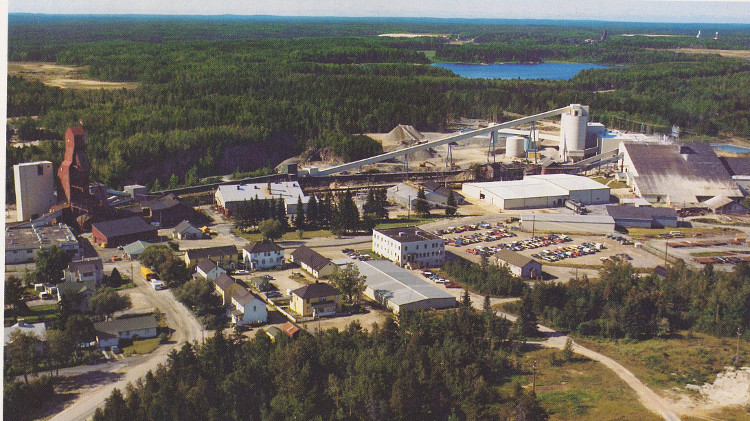 It is no secret that financing in the mineral exploration sector has been extremely hard to come by over the last few years. Junior mining companies in particular often have to look for alternative capital sourcing options simply to maintain their operations. Even flow-through share financing – the made-in-Canada financing option that boosts the ability of resource exploration firms to raise funds on the open market – has virtually dried up. Fortunately, one avenue of exploration financing has remained open during this time: flow-through share donation financing (FTSDF).
It is no secret that financing in the mineral exploration sector has been extremely hard to come by over the last few years. Junior mining companies in particular often have to look for alternative capital sourcing options simply to maintain their operations. Even flow-through share financing – the made-in-Canada financing option that boosts the ability of resource exploration firms to raise funds on the open market – has virtually dried up. Fortunately, one avenue of exploration financing has remained open during this time: flow-through share donation financing (FTSDF).
Because of its inherent tax benefits, flow-through investing has typically been an attractive option for high net-worth Canadian retail investors, even in relatively volatile markets. However, the global downturn in mining equities over the past few years has taken a huge bite out of the flow-through investment channel in Canada. By some estimates, total capital investment levels were down by 50 per cent or more between 2012 and 2015.
Given that around half of the 2,400 mining companies listed on the Toronto Stock Exchange (TSX) and TSX Venture Exchange are juniors, a lot of them have been feeling a serious capital pinch. In fact, many are struggling to survive or are delaying further exploration activities until market sentiment shows some sustained renewal.
While Canadian investors taking advantage of standard flow-through offerings stand to gain as much as 50 per cent downside protection on the value of their investment through direct tax savings, the approach traditionally provides zero benefit to offshore investors.
However, the advent of FTSDF enables offshore investors to benefit from the Canadian flow-through tax regime by leveraging the tax incentives available to individuals making major charitable donations. These incentives allow the donors to effectively make their gifts to charity at a reduced cost while providing investors with access to large blocks of shares at attractive prices.
Here is how it works: A donor first subscribes for flow-through shares issued by a junior mining company, which are immediately donated to a charity of his or her choice. These shares are then sold on behalf of the charity to institutional and/or offshore investors for cash. The mining company issuing the shares will receive a premium to the market price of the shares while the end investor will typically purchase the shares at a discount to the market price.
PearTree Financial established FTSDF in 2007 to bolster the fundraising efforts of registered charities across Canada. Since it was introduced to the market, FTSDF has benefited many juniors across the country by providing access to institutional and offshore capital, with a less dilutive impact than standard share offerings.
FTSDF provides obvious cost benefits to the charitable donors that employ this financial strategy. However, because it effectively makes available standard flow-through share offerings (which by their very nature can only be accessed by individual Canadian investors) to institutional and offshore investors, Canadian mining exploration firms now have access to new, large and motivated capital pools. And since flow-through shares are in effect regular common shares (the tax benefits go to the initial purchaser), they can be sold – often at a discount – to any interested investor in the world.
FTSDF investors commonly are large strategic or institutional buyers. Because such investors are motivated by the potential for gains on high-quality Canadian mining exploration properties, as opposed to tax deductions, they are usually more stable and patient investors. And because the subscribers in this format are motivated by philanthropy – not profit – the shares normally command a higher premium to market prices than other offerings. This fact helps minimize a company’s stock dilution and allows them to raise additional funds for resource exploration and/or development activities.
One company that has taken advantage of the FTSDF program multiple times is Toronto-based Lakeshore Gold, which has raised about $40 million in FTSDF funds to advance several of its key exploration projects in recent years. Others that have raised funds through this program include Seabridge Gold, Eastmain Resources and Spanish Mountain Gold.
In fact, PearTree subscribers alone have accounted for more than $270 million in flow-through financings since the beginning of 2013, representing roughly 25 per cent of the overall mining exploration capital market in Canada during that time.
Although FTSDF is not the right financing solution for every mineral exploration company, for those that are close to turning their provable find into a saleable commodity, it can open the window to new and reliable sources of capital from around the world.
Norman Brownstein, B. Eng, MBA, CFA, is president of PearTree Securities in Toronto. His experience spans both trading and sales over a 20-year career in finance, which includes having held the position of managing director at both HSBC Bank USA and at Deutsche Bank Securities. Norman has established expertise in structured products in commodities, credit, equities, hedge funds, rates and tax structures.
Got an opinion on one of our columns? Send your comments to editor@cim.org.




 It is no secret that financing in the mineral exploration sector has been extremely hard to come by over the last few years. Junior mining companies in particular often have to look for alternative capital sourcing options simply to maintain their operations. Even flow-through share financing – the made-in-Canada financing option that boosts the ability of resource exploration firms to raise funds on the open market – has virtually dried up. Fortunately, one avenue of exploration financing has remained open during this time: flow-through share donation financing (FTSDF).
It is no secret that financing in the mineral exploration sector has been extremely hard to come by over the last few years. Junior mining companies in particular often have to look for alternative capital sourcing options simply to maintain their operations. Even flow-through share financing – the made-in-Canada financing option that boosts the ability of resource exploration firms to raise funds on the open market – has virtually dried up. Fortunately, one avenue of exploration financing has remained open during this time: flow-through share donation financing (FTSDF).